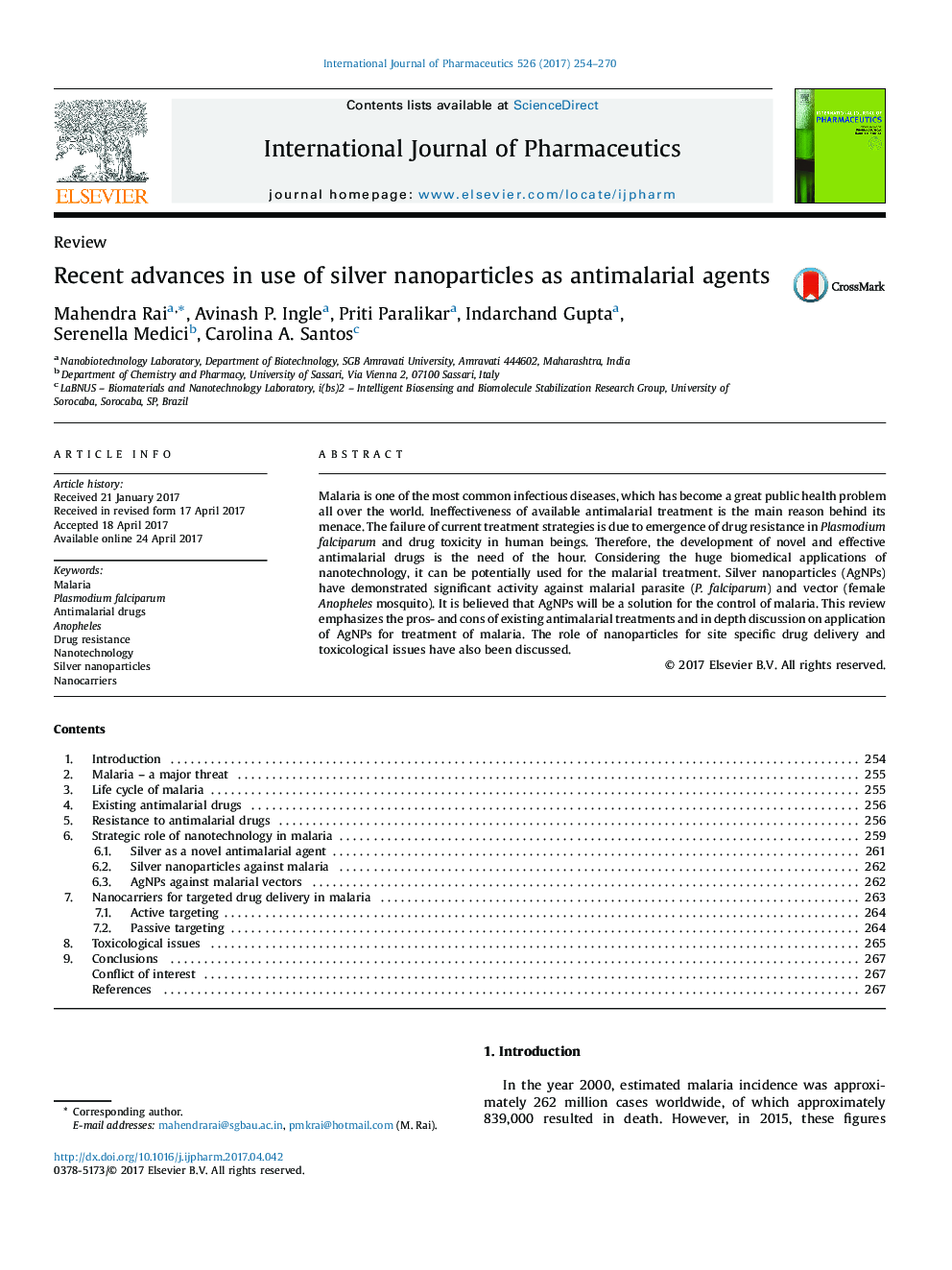| کد مقاله | کد نشریه | سال انتشار | مقاله انگلیسی | نسخه تمام متن |
|---|---|---|---|---|
| 5550233 | 1557289 | 2017 | 17 صفحه PDF | دانلود رایگان |
Malaria is one of the most common infectious diseases, which has become a great public health problem all over the world. Ineffectiveness of available antimalarial treatment is the main reason behind its menace. The failure of current treatment strategies is due to emergence of drug resistance in Plasmodium falciparum and drug toxicity in human beings. Therefore, the development of novel and effective antimalarial drugs is the need of the hour. Considering the huge biomedical applications of nanotechnology, it can be potentially used for the malarial treatment. Silver nanoparticles (AgNPs) have demonstrated significant activity against malarial parasite (P. falciparum) and vector (female Anopheles mosquito). It is believed that AgNPs will be a solution for the control of malaria. This review emphasizes the pros- and cons of existing antimalarial treatments and in depth discussion on application of AgNPs for treatment of malaria. The role of nanoparticles for site specific drug delivery and toxicological issues have also been discussed.
Malaria is one of the most common infectious diseases, which has become a great public health problem all over the world. In effectiveness of available antimalarial treatment and emergence of drug resistance is the main reason behind its menace. In this context, nanotechnology will be the only solution for the control of malaria.112
Journal: International Journal of Pharmaceutics - Volume 526, Issues 1â2, 30 June 2017, Pages 254-270
